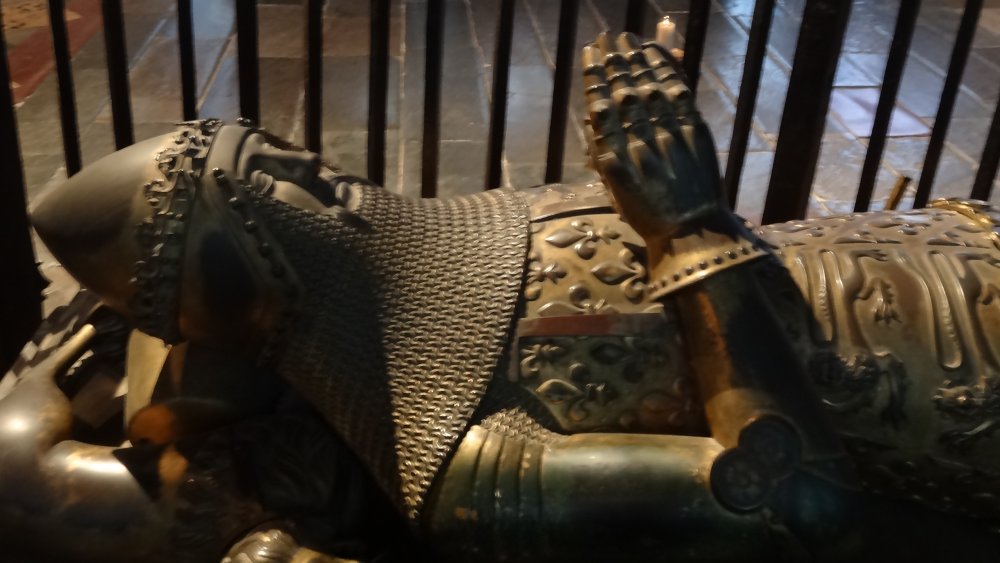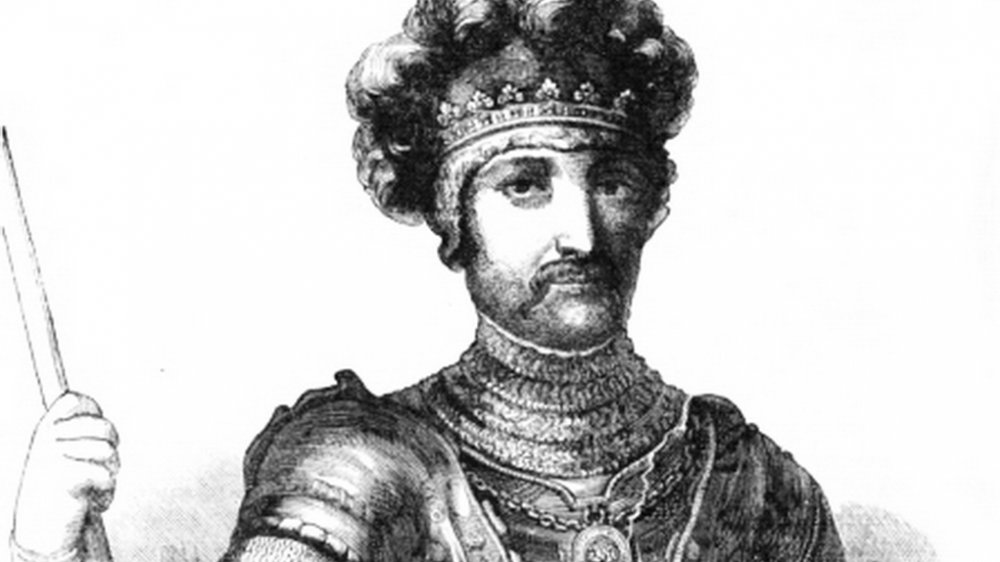The Reason Edward The Black Prince May Not Deserve His Evil Reputation
History is littered with royal jerks, some of whom wore crowns. According to historian Dr Mike Ibeji, the notoriously treacherous King John "has been seen as a weedy little tick" compared to his widely beloved brother, the Crusader king Richard the Lionhearted. Literal lady-killer King Henry VIII was posthumously coronated as the worst English king ever in 2015, and one of his contemporaries compared him to Satan. And if Henry hadn't wasted his vast wealth, then the "Black Prince" Edward Woodstock of Wales would have given the ruthless Tudor a run for his money in the race to outshine the fires of hell. Or at least that's what his bitter enemies would have you think if they weren't dead.
Edward's ominous moniker might have reflected the fact that he wore black armor, but his affinity for slaughter made him sound like every bit of the Prince of Darkness his nickname resembles. Then again, some of history's most reviled villains were actually innocent. Can Prince Edward's reputation rise from the ashes of his inflammatory actions?
Seeing the dark prince in a new light
War is obviously hell, and some of the battle tactics that were typical of Black Prince's time would make a lake of fire break out in a cold sweat. Named Prince of Wales in 1343, he fought in the Hundred Years' War during its infancy, per the Ancient History Encyclopedia. Edward employed a "terrible scorched-earth strategy," torching French towns as much as he could. Of course, the purpose wasn't just to make his enemies as black as his armor or to burn them all in some Targaryen-esque frenzy. Invading troops got free, presumably cooked food, grabbed booty, held noble prisoners for ransom, and dealt an economic haymaker to the enemy.
Despite all the fire, Edward didn't blaze any trails in terms of cruelty. William the Conqueror burned enemy towns centuries earlier. Instead the BBC says the "blackest stain upon Edward's reputation is the sack of the French town of Limoges in September 1370." The prince pounced after Bishop of Limoges, Johan de Cross — Edward's buddy and the godfather to his son — stabbed him in the back by defecting to the French.
Chronicler Jean Froissart painted a portrait of crimson desolation at Limoges — people pleading on their knees only to be massacred by a merciless Edward. More than 3,000 townspeople supposedly perished in the wanton slaughter. But the Black Prince penned a letter stating that his men killed 100 soldiers and 200 civilians, 10 times fewer people than Froissart asserts.

